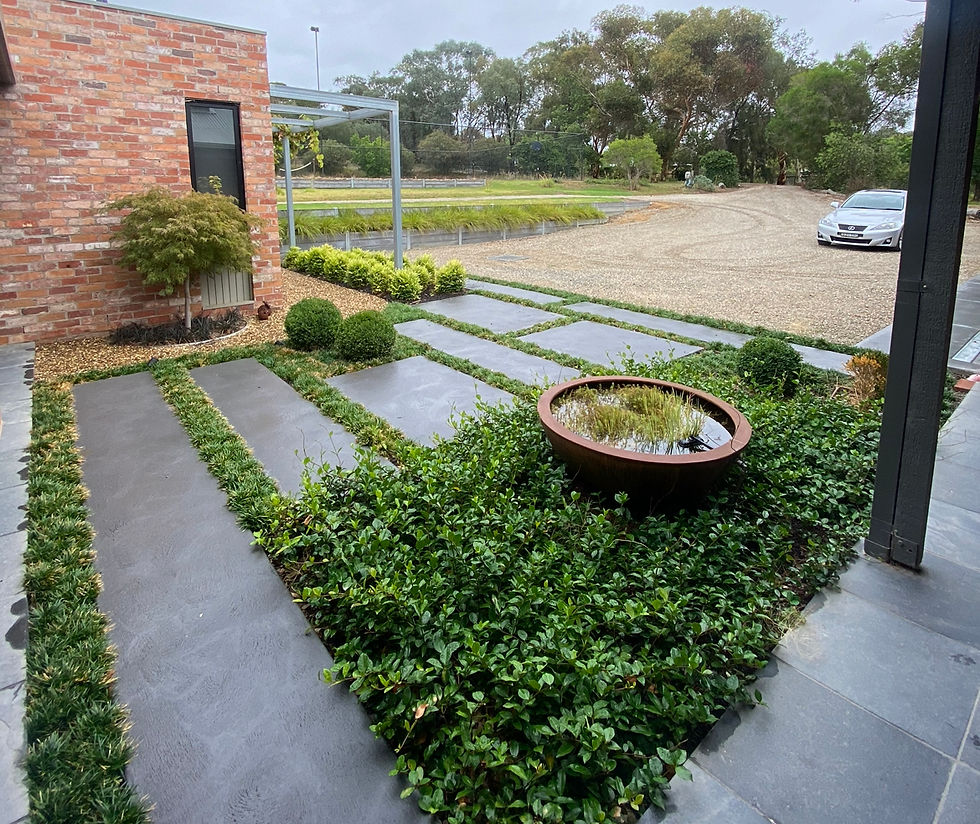The Process Behind Building Beautiful Outdoor Spaces
- Arrow Article

- Aug 19
- 4 min read
Creating stunning outdoor spaces is both an art and a science. It involves careful planning, design, and execution to transform a simple yard into a breathtaking landscape. Whether you want a peaceful garden retreat, a functional entertaining area, or a vibrant play space, understanding the process behind landscape construction is essential. This guide will walk you through the key steps involved in building beautiful outdoor spaces that last.
Understanding Landscape Construction
Landscape construction is the foundation of any successful outdoor project. It involves the physical building and installation of elements such as patios, retaining walls, pathways, water features, and planting beds. Unlike simple gardening, landscape construction requires technical skills, knowledge of materials, and an eye for design.
The process begins with a thorough site analysis. This includes assessing soil quality, drainage, sunlight exposure, and existing vegetation. These factors influence what can be built and where. For example, a sloped yard may require retaining walls to prevent erosion, while a shaded area might need shade-tolerant plants.
Next, a detailed design plan is created. This plan outlines the layout, materials, and features to be included. It serves as a roadmap for the construction phase, ensuring that every element fits together harmoniously.

Once the design is approved, the construction team prepares the site. This may involve clearing debris, grading the land, and installing irrigation systems. Proper preparation is crucial to avoid future problems like water pooling or plant stress.
The actual building phase follows, where hardscape elements are installed first. These include patios, decks, fences, and pathways. Afterward, planting beds are created, and plants are installed according to the design. Finally, finishing touches such as lighting and mulch complete the project.
Key Elements of Landscape Construction
Successful landscape construction combines several key elements to create a cohesive outdoor space:
Hardscaping: This refers to the non-living components like stone walls, patios, and walkways. Hardscaping provides structure and functionality.
Softscaping: This includes plants, trees, shrubs, and lawns. Softscaping adds colour, texture, and life to the space.
Water Management: Proper drainage and irrigation systems are essential to maintain plant health and prevent damage.
Lighting: Outdoor lighting enhances safety and highlights features during the evening.
Furniture and Accessories: These elements make the space usable and comfortable.
Each element must be carefully selected and placed to complement the others. For example, a stone patio might be surrounded by native plants that thrive in local conditions, reducing maintenance needs.

What is a Realistic Landscaping Budget?
Setting a realistic budget is one of the most important steps in landscape construction. Costs can vary widely depending on the size of the project, materials used, and complexity of design.
Here are some tips to help you establish a budget:
Define Your Priorities: Decide which features are must-haves and which can be added later. For example, a functional patio might be more important than elaborate lighting.
Research Costs: Get quotes from multiple contractors and suppliers. Prices for materials like natural stone or timber can vary.
Include Contingencies: Set aside 10-20% of your budget for unexpected expenses.
Plan for Maintenance: Some plants and materials require ongoing care, which should be factored into your long-term budget.
On average, a basic landscape construction project can start from a few thousand dollars for small patios or garden beds, while large-scale projects with extensive hardscaping and water features can reach tens of thousands.

Choosing the Right Materials and Plants
Selecting the right materials and plants is crucial for durability and aesthetics. Materials should be chosen based on climate, style, and maintenance requirements.
Materials: Natural stone, concrete pavers, timber, and metal are common choices. For example, sandstone is popular in Australian landscapes for its warm tones and durability.
Plants: Native plants are often the best choice as they are adapted to local conditions and require less water and care. Consider drought-tolerant species if water conservation is a priority.
Consulting with a professional landscaper can help you make informed decisions. They can recommend materials and plants that suit your soil type, sun exposure, and design goals.
Working with Professionals for Landscape Construction Services
While DIY projects can be rewarding, complex landscape construction often requires professional expertise. Hiring experienced contractors ensures that the work is done safely, efficiently, and to a high standard.
Professional landscape construction services offer:
Expert design and planning
Access to quality materials and equipment
Skilled labour for construction and planting
Compliance with local regulations and permits
Long-term support and maintenance advice
Collaborating with professionals can save time and money by avoiding costly mistakes and ensuring your vision is realised beautifully.
Enhancing Your Outdoor Space Over Time
Building a beautiful outdoor space is just the beginning. To keep it looking its best, regular maintenance and occasional updates are necessary.
Seasonal Care: Prune plants, fertilise soil, and clean hardscape surfaces regularly.
Upgrades: Add new features like garden lighting, seating, or water elements as your needs change.
Sustainability: Incorporate eco-friendly practices such as rainwater harvesting and composting.
By investing in ongoing care, your outdoor space will remain a welcoming and enjoyable environment for years to come.
Creating beautiful outdoor spaces through landscape construction is a rewarding journey. With careful planning, the right materials, and professional support, you can transform any yard into a stunning retreat that reflects your style and enhances your lifestyle. Whether starting small or dreaming big, understanding the process is the first step toward making your outdoor vision a reality.





Comments